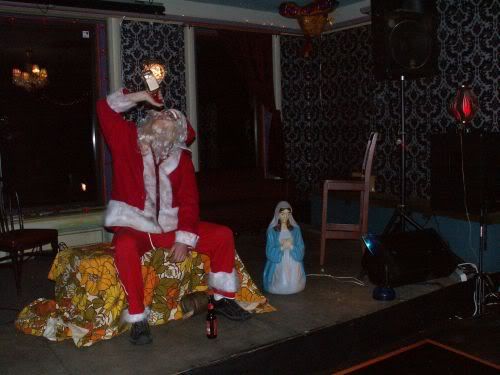A little late to notice, but it seems that the Pittsburgh Post Gazatte has another arts reviewer. Most of the reviews are written by Mary Thomas, who has been writing for the Post for years.
I admit that I rarely look at the Post's art reviews. They are somewhat sporadic and generally buried. Like most regional newspapers, the Post doesn't even have a visual arts link in their menu banner. And it seemed to me that the majority of the coverage was on the museum and institution blockbuster shows.
But I read Terry Young's review of the Mattress Factory's
India this morning --
When we look at the intent of the larger exhibition, in relationship to institutional funding in Pittsburgh, we find an ill-informed curator and director who found nothing "New," as the exhibition title suggests, or even contemporary, but instead brought back mediocrity labeled with the exotic misnomer "India."
The title "India" fulfills a multicultural prerequisite for contemporary arts funding, the original intent of which, like that of the Mattress Factory itself, was supportive of cultural and aesthetic change decades ago but now serves as a linguistic barrier excluding actual contemporary ideas of cultural and aesthetic change. Read the article
Oh ouch, I thought. The elephant in the room is finally seen. While I do believe that non-profit funding is a great avenue for promoting work that is unusual, I do tend to agree that "institutional funding" creates a whole other set of aesthetics and influences of what is seen in our non-profit cultural organizations. At any rate, I ran a search and found this
Pop City article about an exhibit,
Appalachian Spring Summer and Fall, that Mr. Young put together a couple years ago. From the article --
After leaving Pittsburgh for New York, London and Berlin, Young realized that “how it was everywhere” in the art world was much more trend- and commercial-conscious, and much more gallery oriented. While artists in the art-world capitals were opening vast shows, selling pieces, and striving for an ever-looming specter of fame and success, the artists Young grew up around in Pittsburgh were generally just getting on with the business of making art. Read the article
Well, but, what's wrong with selling your work? It's almost like he's saying it's okay for Pittsburgh artists to be left out of the "booming art market" that artists in other cities enjoy. Because that's what makes our region's art so, well, regional. I would also point out that this perception of Pittsburgh artists is also what keeps them from competing in the larger arena and forces so many talented artists to leave the region.
I am here because I sincerely like this city. But I also sincerely believe that art makers should enjoy the same attributes of success as members of any other profession. I don't believe that poverty is an appropriate ground for the seeds of creativity.





